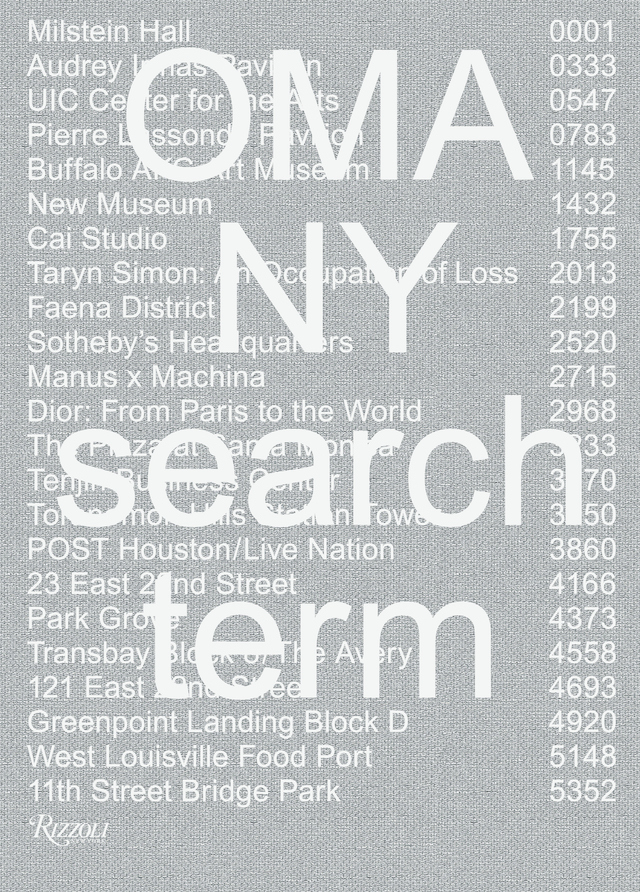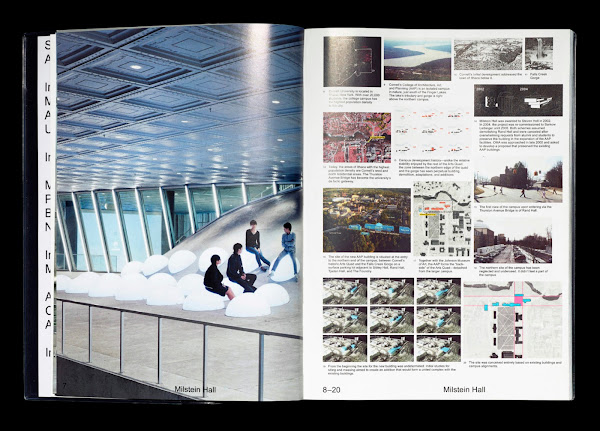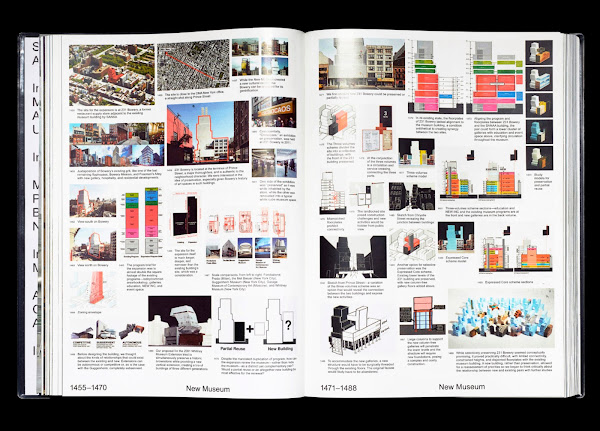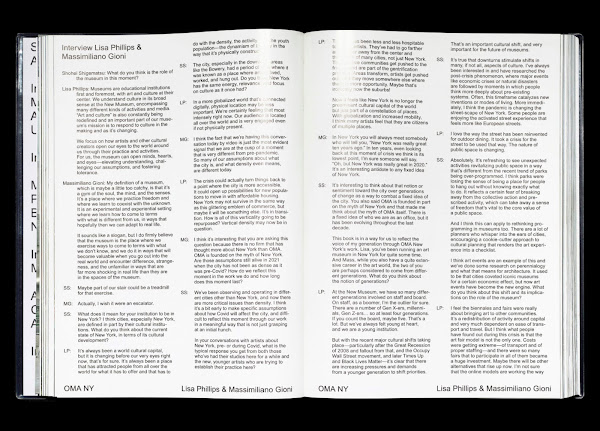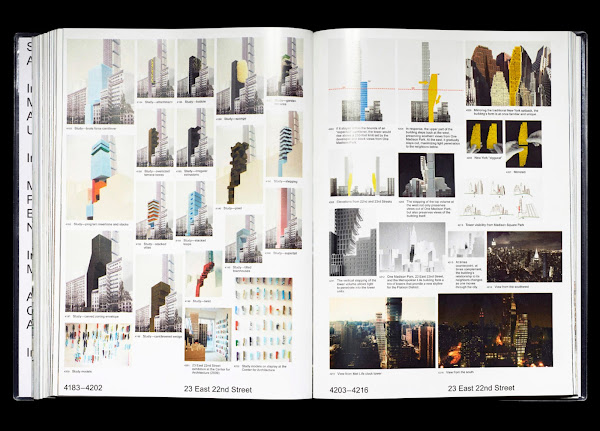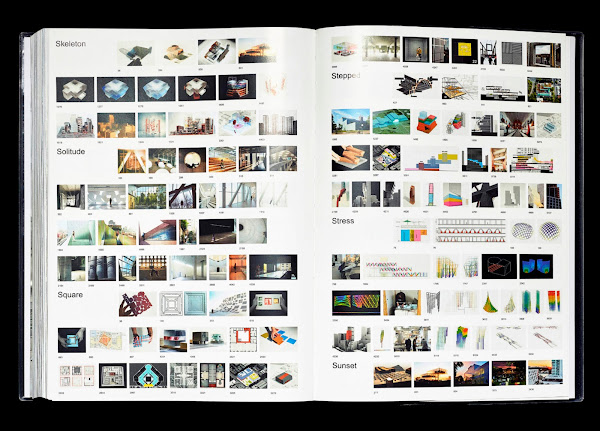OMA NY
OMA NY: Search Termby Shohei Shigematsu, Jason LongRizzoli, October 2021Paperback | 8 x 11 inches | 676 pages | 5,565 illustrations | English | ISBN: 9780847869206 | $95.00PUBLISHER'S DESCRIPTION:Well into its fourth decade, the Office for Metropolitan Architecture (OMA), founded by Rem Koolhaas in 1975, remains one of the most influential and successful practices of its kind. OMA describes itself as “a firm operating within the traditional boundaries of architecture and urbanism that applies architectural thinking to domains beyond.” OMA New York, has grown from an American outpost to a full-fledged operation with its own attitudes, contributing to the evolution of the globally acclaimed office. Through a diversity of projects, the firm has transformed our understanding of the city and our evolving relationship with art, fashion, food, sustainability, and other quintessentially twenty-first-century preoccupations. The works presented here elaborate on OMA’s philosophy even as they expand its portfolio geographically. Featured projects (led by partners Shohei Shigematsu and Jason Long) include residential skyscrapers in New York, Miami, and San Francisco, mixed-use developments in cities from Tokyo to Houston, and projects like 11th Street Bridge Park in the public realm, alongside more intimate spaces such as the studio for renowned Chinese artist Cai Guo-Qiang. Permanent structures, such as Milstein Hall at Cornell University, the new galleries of Quebec’s Musée National des Beaux-Arts, a cultural forum and neighborhood for Faena in Miami, and the expansion of museums such as the Albright-Knox Art Gallery in Buffalo and the New Museum in Manhattan, contrast vividly with temporary interventions such as the Manus x Machina exhibition at the Met Costume Institute and the sculptural installation of soaring concrete columns for An Occupation of Loss.In between projects are dialogues with leading policy makers, museum directors, artists, fashion designers, musicians, chefs, and curators—Christopher Hawthorne, Lisa Phillips and Massimiliano Gioni, Taryn Simon, Iris van Herpen, Virgil Abloh, David Byrne, Alice Waters, and Cecilia Alemani—who provide insight onto areas of the firm’s interests and preoccupations beyond the realm of architecture.Shohei Shigematsu and Jason Long are partners at OMA, based out of the New York office.REFERRAL LINKS: dDAB COMMENTARY:The first monograph to come out of the Office for Metropolitan Architecture (OMA) since Content, the 2004 sequel to the iconic 1997 tome S,M,L,XL, is devoted to OMA New York, the branch of OMA run by Shohei Shigematsu and Jason Long. Those eager for contributions and/or projects by Rem Koolhaas will be disappointed though, given that the OMA founder was not involved in the making of Search Term and only two of the nearly two dozen projects list Koolhaas as a partner: Milstein Hall at Cornell University and 23 East 22nd Street in New York City. Best I can tell, the latter project, which I called an "exciting diagram" when it was unveiled in 2008, is the only project in the new book that for certain will never happen — it "fell victim to the Lehman Brothers bankruptcy and financial collapse" in 2009. The 22 other projects in Search Term are a mix of built, temporary, under construction, and in-progress projects that are each documented with hundreds of images: an average of 241 images per project, in fact.Shigematsu and Long presented the book a couple of weeks ago at Rizzoli Bookstore, where a large printout of every page from the book served as a backdrop for selfies and photos with the monograph's authors/architects. Even an unfocused glance at the backdrop revealed the ebb and flow of the book: each project starts with full-bleed images astride two pages of text, is followed by many pages of thumbnail images, and then ends with two pages of plans and other drawings. Those projects are inserted into eight typological sections, from Institution and Museum to Residential and Public Realm. Between each are interviews that the two OMA New York partners held with big names in art, fashion, and other realms, including Iris van Herpen, Virgil, Abloh, David Byrne, and others. The monograph ends with an alphabetical list of Search Terms: a visual index of common tactics (big model, cantilever, pixel, etc.) and other means of categorizing the work of OMA New York, all keyed to the numbered images rather than the project names or pages.Speaking of pages, although the publisher's website indicates that Search Term is 676 pages long, I can only trust that is correct, since the pages are not numbered. In lieu of pagination, the projects are found via the image numbers, something that is expressed as early as the cover, whose metallic linen surface is protected by a thick plastic sleeve. These images — the small ones between the full-bleed images at the start of each project and the drawings that finish them off — are what makes this monograph on OMA New York so unique

by Shohei Shigematsu, Jason Long
Rizzoli, October 2021
Paperback | 8 x 11 inches | 676 pages | 5,565 illustrations | English | ISBN: 9780847869206 | $95.00
PUBLISHER'S DESCRIPTION:
REFERRAL LINKS:
SPREADS (Images courtesy OMA New York; photos by Spec_Ops.NYC):

